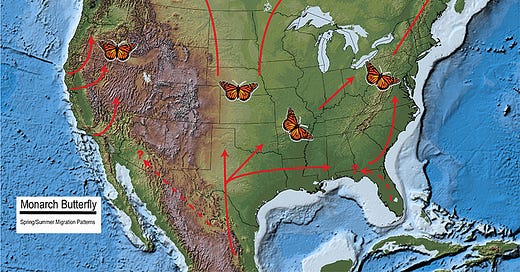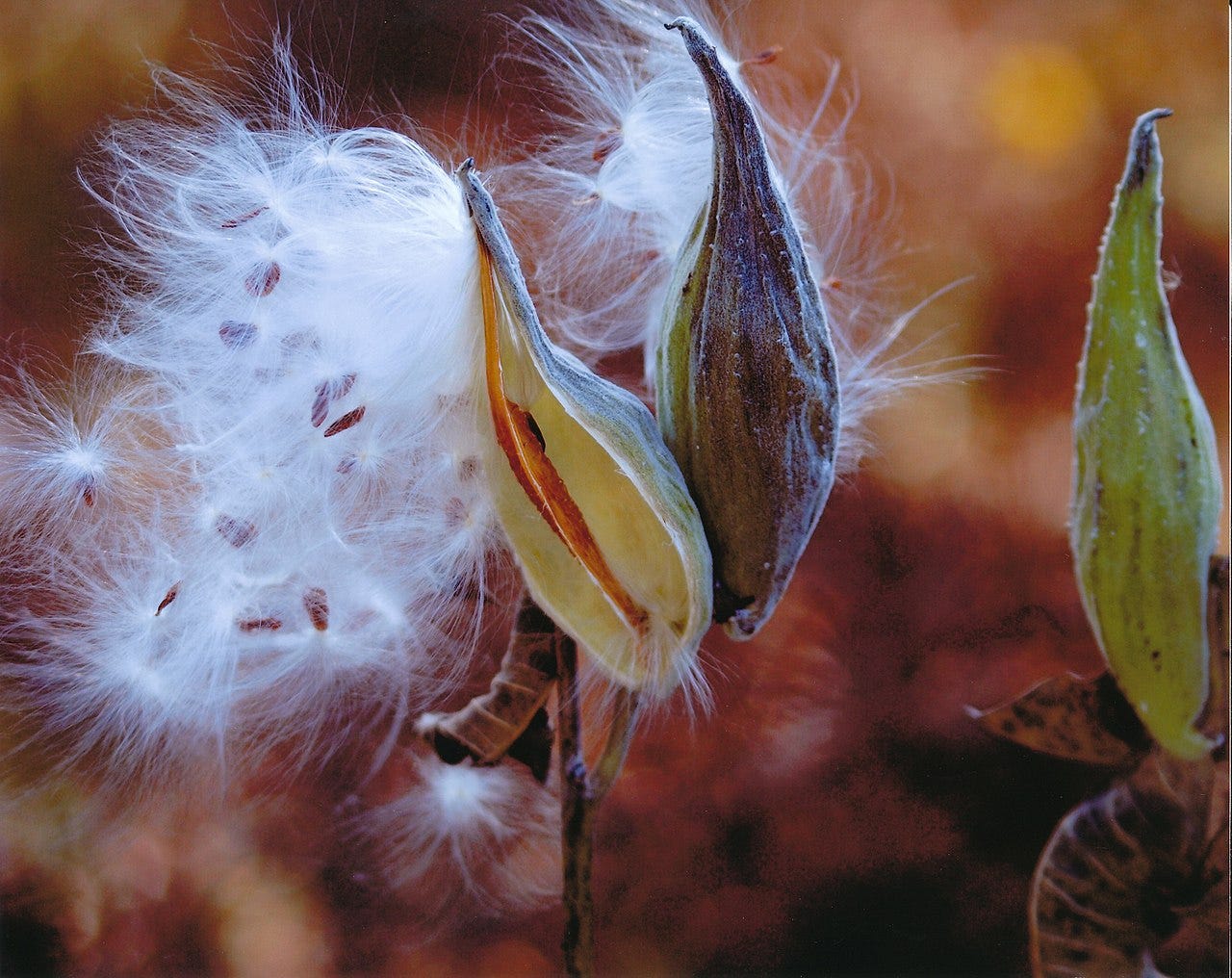Monarchs are in the news...
The monarch and the milkweed plant weave a story of the profound interconnectedness we dwell within…
I live in California—terrain and air space of the western monarch (Danaus Plexippus) butterfly. I’ve lived in Northern California for most of my adult life following a childhood in Ohio, with a brief and extraordinary sojourn in Hawai’i.
The time of year when the butterflies make their spring migration is approaching. And monarchs are in the news. This past week there was coverage in The Guardian and in The New York Times about the falling butterfly counts in their overwintering areas—with sobering news tempered by some positives.
The Guardian post quoted Gregory Mitchell, a researcher for Environment and Climate Change Canada, saying “we have the drive, we have the tools, we have the people” to address humans’ impact on the monarch migration.
The New York Times post quoted monarch scientist Andy Davis at the University of Georgia: “Monarchs can rebound from almost nothing,” Dr. Davis said. “Everything hinges on the availability of plants and resources in the spring.”
This is not to discount the sobering details…read these two posts yourself to learn about the recent reports. But it is to remind us, we have the agency. In a documentary I found called Saving the Migration (2015), Norman Murray, Missouri Department of Conservation, reminds us:
“My interest is that people not key in so much on milkweed that they forget that they need other nectar sources as well…there’s more to their habitat than just milkweeds. People can help it at any scale.”
Because I have spent a lot of my life—over several decades now—in the western monarch’s overwintering areas on the California coast, I have observed the drop in population with my own eyes. I remember as recently as 1999, trees pulsing with thousands of monarchs. Considering how I could contribute led me some time ago to Xerces Society’s conservation efforts.
Xerces Society is doing great work. Take time to explore all that they have to offer…like their native plant nectar guides, created in partnership with the National Wildlife Federation and Monarch Joint Venture. These will help you take to heart Norman Murray’s reminder that monarchs “need other nectar sources as well…there’s more to their habitat than just milkweeds.”
And learn more about what happened to all the milkweed, who is working to change that, and how you can help. I recall vividly the abundance of milkweed plants with their horn-shaped pods holding a few hundred silky seeds…the closest thing to a magical treasure trove for a small child growing up in Ohio. So when I noticed a review of a book by Eric Lee-Mäder, pollinator and agricultural biodiversity co-director at Xerces Society, I tracked down the book The Milkweed Lands—An Epic Story of One Plant, Its Nature and Ecology immediately.
I read a lot of books but I have to say, this is one of the loveliest books I’ve read in a while…it’s like a children’s illustrated book for adults, clearly made with love. The subtitle An Epic Story of One Plant, Its Nature and Ecology really captures it. Read this review in the NYT to preview some of the illustrations by Beverly Duncan.
Monarch Research
Before writing this post, I didn’t really understand the relationship of the western monarch to the eastern monarch. My question led me to the De Roode Lab at Emory University, “one of a handful [of labs] in the world that studies monarch butterflies,” and the research by Jaap de Roode and Amanda Pierce.
Jaap de Roode writes:
“You would expect that organisms with different behaviors and ecologies would show some genetic differences,” de Roode says. “But we found that you cannot distinguish genetically between the western and eastern butterflies.”
Read more about their research here. (Make sure to click this link if only to see the extraordinary photos.)
Monarch Curriculum
National Wildlife Federation has created The Monarch Mission, an NGSS-aligned curriculum.
You can download bilingual and Spanish versions here.
Thanks for reading. Be well. And please consider sharing this post with family, friends, teachers, and/or colleagues who might appreciate it.




